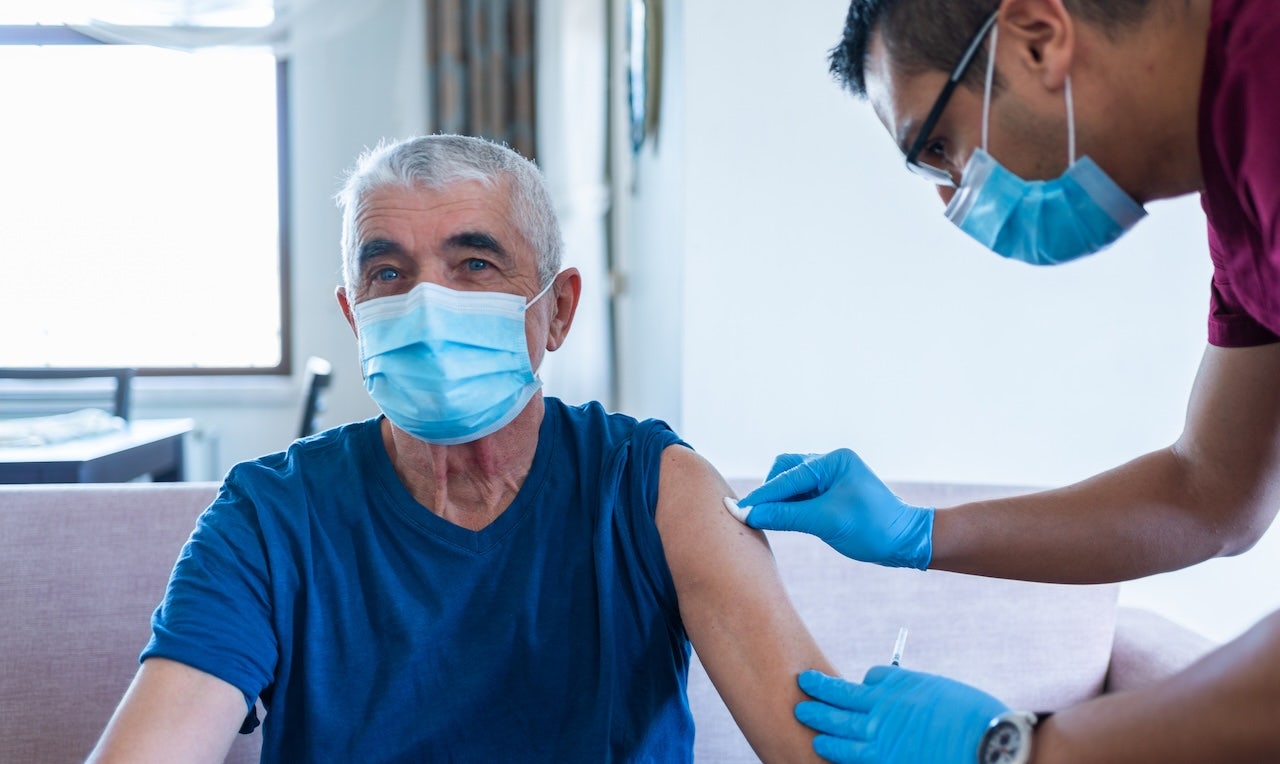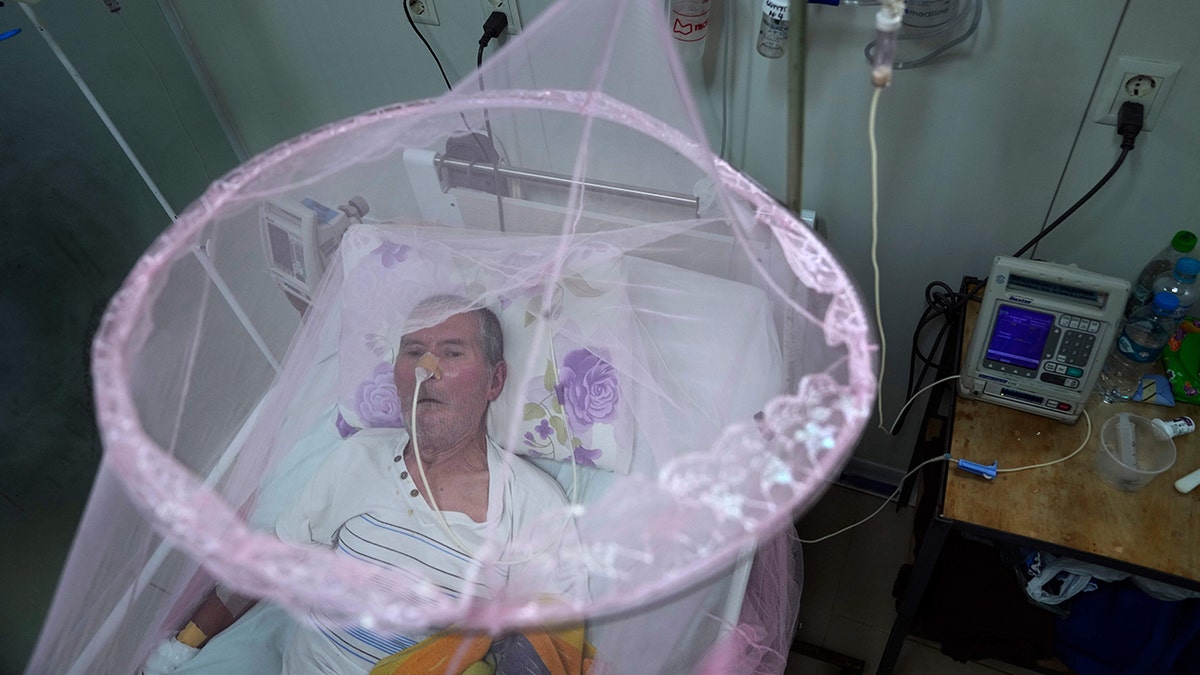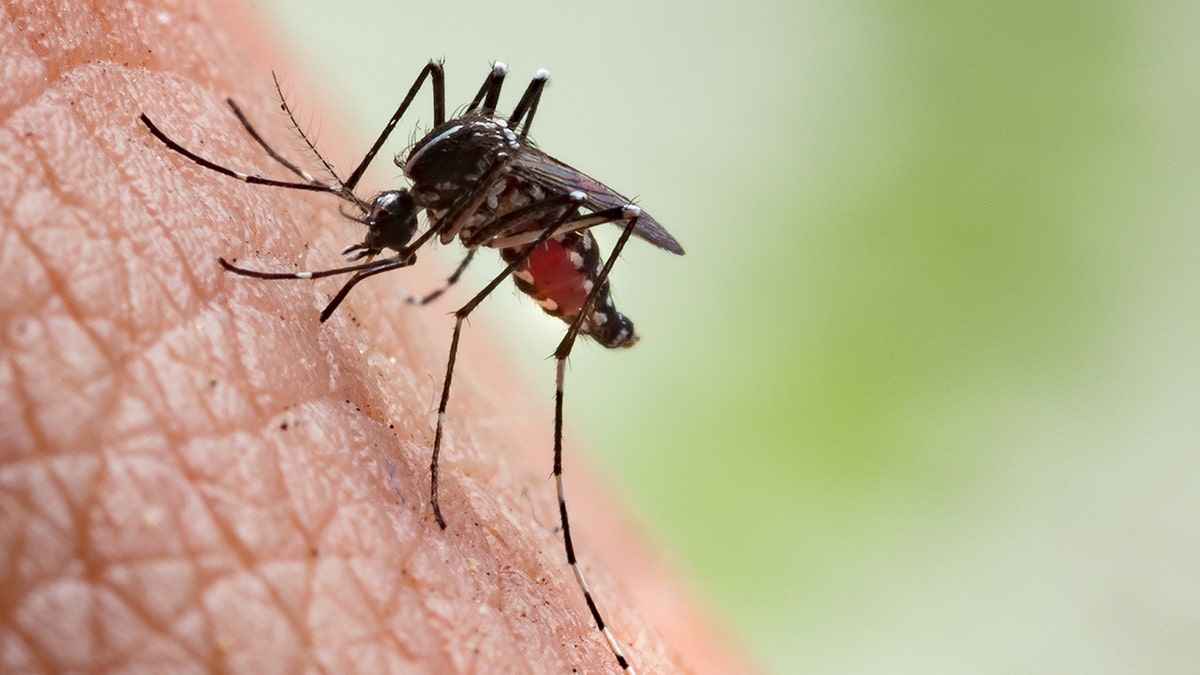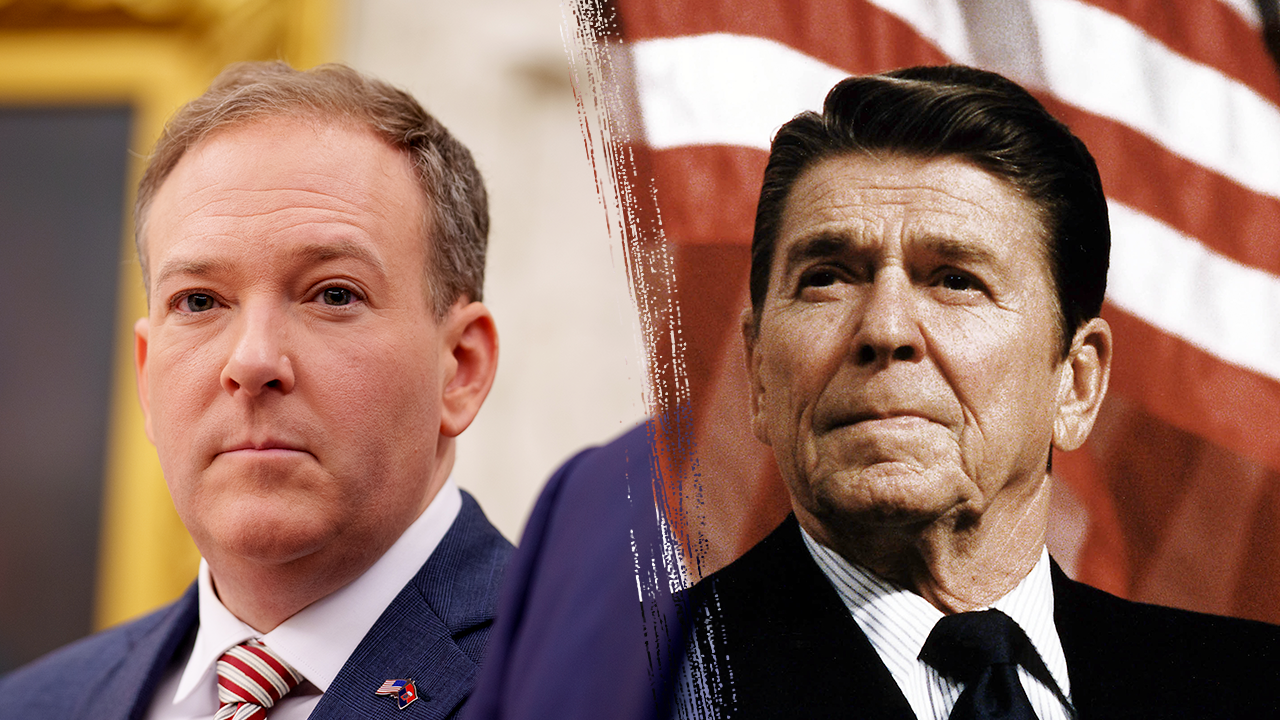Health
Firings at FDA Decimated Teams Reviewing AI and Food Safety

In recent years, the Food and Drug Administration hired experts in surgical robots and pioneers in artificial intelligence. It scooped up food chemists, lab-safety monitors and diabetes specialists who helped make needle pricks and test strips relics of the past.
Trying to keep up with breakneck advances in medical technology and the demands of a public troubled by additives like food dyes, the agency enticed scores of midcareer specialists with remote roles and the chance to make a difference in their fields.
In one weekend of mass firings across the F.D.A., much of that effort was gone. Most baffling to many were the firings of hundreds whose jobs were not funded by taxpayers. Their positions were financed through congressionally approved agreements that routed fees from the drug, medical device and tobacco industries to the agency.
Known as user fees, the money provides adequate staffing for reviews of myriad products. While criticized by some, including the nation’s new health secretary, Robert F. Kennedy Jr., as a corrupting force on the agency, the industry funds are also widely viewed as indispensable: They now account for nearly half of the agency’s $7.2 billion budget.
Though the F.D.A. is believed to have lost about 700 of its 18,000 employees, some cuts hit small teams so deeply that staff members believe the safety of some medical devices could be compromised.
Among the layoffs were scientists supported by the fees who monitor whether tests pick up ever-evolving pathogens, including those that cause bird flu and Covid. They hobbled teams that evaluate the safety of medical devices like surgical staplers, new systems for diabetes control and A.I. software programs that scan millions of M.R.I.s and other images to detect cancer beyond the human eye. The cuts also eliminated positions for employees who have played a role in assessing the brain-implant technology in Elon Musk’s Neuralink devices.
The layoffs affected so many key experts that a major medical device trade group has requested that the Trump administration reconsider the job cuts.
The dismissals also included lawyers who warned retailers about underage tobacco sales and scientists who studied the safety of e-cigarettes and new heat-not-burn devices. The tobacco division — which is fully funded by an excise tax on cigarettes — lost about 85 staff members.
Dr. Robert Califf, the F.D.A. commissioner under President Biden, said the personnel cutbacks seemed scattershot. Taking a not-so-subtle aim at Mr. Musk’s Department of Government Efficiency, which is reducing the federal work force, Dr. Califf said the layoffs were, in effect, “anti-efficiency.”
“These are not hires that are done arbitrarily,” he said. “They’re done to meet a need.”
A lawsuit challenging the firings filed by unions, including one that represents some F.D.A. employees, failed to stop the layoffs in a ruling issued Thursday. Other cutbacks reduced the 2,000-member staff of the F.D.A.’s food division, which is supported by tax dollars.
Jim Jones, the former director of the division who resigned on Monday over the cuts, said that he had briefed the Trump transition team on his efforts to create a new office that would review a premier target of Mr. Kennedy and his agenda to Make America Healthy Again: food additives that are already on the market.
Nine people from that food-chemical-safety staff of 30 are gone, including specialized toxicologists and chemists, Mr. Jones said in an interview.
“They’ve created a real pickle for themselves,” by cutting staff members working on a key priority, Mr. Jones said. “You just can’t do an assessment for free and you can’t ban chemicals by fiat.”
In interviews with 15 current and former agency staff members, they said those who were laid off had been probationary employees, a group that included agency veterans who took on new roles, were recently promoted or were hired in the last two years.
Those who remained said that they had been scrambling to pick up pressing medical device reviews and move forward with studies to bulletproof methods for detecting deadly bacteria during inspections at food production sites.
Divisions that review novel medications, vaccines and gene therapies were largely spared. Officials with the F.D.A.’s parent agency, the Department of Health and Human Services, did not respond to requests for comment.
The F.D.A. employees fired last weekend were notified in uniformly worded emails that their skills were not needed and that their performance was “not adequate to justify further employment by the agency.” Yet many of them said that their performance reviews had said they exceeded expectations.
Tony Maiorana, 37, a chemist, worked on product approval and safety in the fast-changing field of diabetes devices. In the last decade, the field has moved from painful needle pricks and test strips to systems that measure glucose levels just below the skin and automatically infuse the needed insulin.
The work of reviewing new products is painstaking: Novel algorithms measure and dispense insulin; materials implanted in the body must evade rejection by the immune system; and millions of patients from toddlers to the elderly are at risk if devices malfunction.
Still, about half of Dr. Maiorana’s product-review team was eliminated, he said.
“If you’re a patient and you complain, we are the ones that field your complaints,” he said. “We are the ones that monitor the death reports. We’re the ones that are telling companies: ‘Hey, there’s a big pattern of error happening here. People are dying or ending up in the hospital because of your device’ and ‘What has changed? What happened?’”
Dr. Maiorana said that he had expected his government job would be “chill,” but it turned out to be intense. His team had to assess whether studies of new devices that had never been used in humans were safe for adults and children. They also had to watch online marketplaces for diabetes technology that had not been approved by the agency.
“This is the reason the F.D.A. was founded — to protect the public,” Dr. Maiorana said.
Albert Yee, 59, an expert in biomechanics and robotics, was fired on Saturday. In his unit, four of 11 staff members, who review the safety of surgical robots, were let go.
Robotic surgery is increasingly employed in operating rooms across the country, used in cardiothoracic, gynecological and bariatric surgeries. Dr. Yee had worked in the industry and in academia before joining the F.D.A.
He said his team was highly specialized, including an expert with a doctorate in medical robotics and a physician who had conducted robotic operations.
He said that robotic devices had become so complex that the team’s diverse expertise was critical to evaluate not just the safety of such tools but also concerns about cybersecurity.
“All of these devices now — if they’re attached to the hospital network, they become an avenue to get into the hospital network or get into the device itself,” Dr. Yee said.
He said the team also fielded a flood of applications for surgical apparatus developed abroad that were similar to those made by companies based in the United States. He said the applications required close attention to catch problems that could endanger patients.
“The institutional knowledge we’re losing is just horrific,” he said. “I am concerned about public safety with this type of purge.”
Nathan Weidenhamer was a lead reviewer of cardiovascular devices and other high-risk implants.
He said he was shocked and disappointed to be laid off because he and other reviewers in the device division were partly funded by industry-generated fees.
“I naïvely thought we were important, critical public servants and I’d be spared,” he said.
The layoffs clearly did not skip over employee slots created and funded by the agreements negotiated with the industries, congressional lawmakers and F.D.A. officials. The industries provide billions of dollars in return for staff equipped to meet strict deadlines for decisions on product approvals — though not all go in companies’ favor. The money is also used to make the F.D.A. a competitive employer in specialized fields that require advanced degrees.
Some of the deadlines are viewed by F.D.A. staff members as demanding, particularly the 30-day clock requiring them to authorize or add comments to studies of devices that are being implanted in humans for the first time. If the agency does not respond within that time-frame, the study is given a green light under the law.
The depth of cuts to medical device staff prompted AdvaMed, a trade association for the industry, to push back in a letter to a top Health and Human Services official.
The letter detailed about 180 medical device staff cuts, which included 25 experts in artificial intelligence, a 20 percent reduction in biostatisticians who evaluated studies of novel devices and the loss of molecular biologists with expertise in diagnostic tests that pinpoint a cancer subtype. The firings also applied to a top official who was recently recruited to oversee about 10,000 product applications and meeting requests per year.
The group said it appreciated the Trump administration’s efforts to improve efficiency. But “they may have missed the mark on how they rolled it out,” Scott Whitaker, the president of AdvaMed, said in an interview.
Medical device companies benefit when the F.D.A. is well staffed with people who have the expertise to guide the safe development of new technology, he added.
“One that is slow and overregulates is not good,” he said. “One that is under-resourced and doesn’t regulate at all — that’s not good either.”
Alice Callahan contributed reporting.

Health
Trump’s Focus on Punishing Drug Dealers May Hurt Drug Users Trying to Quit

President Trump has long railed against drug traffickers. He has said they should be given the death penalty “for their heinous acts.” On the first day of his second term, he signed an executive order listing cartels as “terrorist organizations.”
But many public health and addiction experts fear that his budget proposals and other actions effectively punish people who use drugs and struggle with addiction.
The Trump administration has vowed to reduce overdose deaths, one of the country’s deadliest public health crises, by emphasizing law enforcement, border patrols and tariffs against China and Mexico to keep out fentanyl and other dangerous drugs. But it is also seeking huge cuts to programs that reduce drug demand.
The budget it submitted to Congress this month seeks to eliminate more than a billion dollars for national and regional treatment and prevention services. The primary federal agency addressing drug use, the Substance Abuse and Mental Health Services Administration, has so far lost about half its workers to layoffs under the Trump administration and is slated to be collapsed into the new Administration for a Healthy America, whose purview will reach far beyond mental illness and drug use.
And if reductions to Medicaid being discussed by Republicans in Congress are realized, millions of Americans will be unable to continue, much less start treatment.
The White House did not respond to requests for comment. The budget itself says that ending drug trafficking “starts with secure borders and a commitment to law and order” and that it is cutting addiction services deemed duplicative or “too small to have a national impact.”
Those cuts are agonizing, public health experts say, because they come just as the country is making sustained progress in lowering the number of fentanyl deaths. Many interventions may be contributing to that progress, including greater availability of the overdose reversal spray naloxone; more treatment beds, sober housing and peer counseling; and declines in the strength and quantity of the illicit drug supply, they say. But studies so far have not demonstrated convincingly which of those factors merit greater focus and investment.
“It would be a tragedy if we defund these programs without fully understanding what’s working and then our overdose rate starts to climb again,” said Dr. Matthew Christiansen, an addiction medicine physician in Huntington, W.Va., a city once labeled ground zero for the opioid crisis.
A letter signed by more than 320 behavioral medicine academic experts, sent Monday to congressional leaders, decried the cuts, including those to “community-based naloxone distribution, peer outreach programs, drug-use-related infectious disease prevention programs and drug test strip programs.”
The president’s budget calls for ending grants for “harm reduction,” a strategy to prevent disease transmission and keep drug users alive that has become largely accepted by mainstream addiction treatment providers.
The budget derides federal financial support for “dangerous activities billed as ‘harm reduction,’ which included funding ‘safe smoking kits and supplies’ and ‘syringes’ for drug users.”
That language is a callback to false reports in 2022 that a $30 million federal harm reduction grant could be used to purchase pipes for smoking crack and meth. In fact, a small portion of that grant, designated for “safer smoking kits,” was for supplies like alcohol swabs and lip balm. The grant also supported programs in states that permit sterile syringe exchanges, effective in reducing hepatitis C and H.I.V. infection rates.
“You can’t just tell people to stop using drugs with a snap of the fingers,” said Dr. Christiansen, a former director of West Virginia’s drug control policy. “These are tools to reduce the harm of opioids while also helping them be successful long-term.”
According to the federal agency’s annual survey of substance use, in 2023, 27.2 million Americans ages 12 or older had a drug use disorder, 28.9 million had alcohol use disorder, and 7.5 million had both.
The budget does leave intact block grants for states to combat addiction and mental illness. But without the agency’s additional grants, hands-on training and monitoring, in addition to possible Medicaid reductions, states will not be able to afford the many medical and social services required to prevent and treat addiction, Dr. Christiansen said.
David Herzberg, a professor of drug policy and history at the University at Buffalo, said that Mr. Trump’s almost single-minded linking of the nation’s drug problems with border issues harks back to late 19th-century America, when the government associated opium dens with Chinese immigrants. Fearing the incursion of Chinese workers and inflamed by press reports of Chinese men using opium to lure young white women into prostitution, Congress severely restricted Chinese immigration.
Then as now, Mr. Herzberg said, political conservatives found that targeting foreign drug suppliers was a muscular means of advancing broader agendas.
In contrast with highly publicized drug seizures, people who chronically use drugs have become afterthoughts, usually visible only as street irritants, their addiction perceived to be the result of their own choices, he said. Elected leaders who advocate for their welfare risk being tarred as soft on crime.
“If politicians are going to stick their necks out for them, I would be shocked,” Mr. Herzberg said.
Health
FDA warns seniors to avoid this vaccine after deadly complications

Trump, RFK Jr. launch $500M universal vaccine initiative
Fox News senior medical analyst Dr. Marc Siegel discusses the Trump administration’s initiative to develop a vaccine to target multiple viruses and the Murdoch Children’s Research Institute studying potential vaccines for strep.
Older adults are being warned against receiving the chikungunya vaccine before traveling.
The Ixchiq vaccination, developed by Valneva to prevent the mosquito-borne chikungunya virus, was approved by the Food and Drug Administration (FDA) in November 2023 as the first of its kind.
The approval applies to anyone aged 18 and older who has a risk of being exposed to the virus.
FIRST VACCINE FOR CHIKUNGUNYA VIRUS, AN ‘EMERGING GLOBAL HEALTH THREAT,’ GETS FDA APPROVAL
But the FDA and the Centers for Disease Control and Prevention (CDC) released a safety notice on May 9 recommending that adults over 60 years old pause use of the vaccine due to fatal complications.
“FDA and CDC will continue the evaluation of post-marketing safety reports for Ixchiq,” the release reads.
Older adults are being warned against receiving the chikungunya vaccine before traveling. (iStock)
“While the safety of Ixchiq for use in individuals 60 years of age and older is being further assessed, FDA and CDC are recommending a pause in use of the vaccine in this age group. FDA and CDC will update the public when the agencies complete their evaluation of this safety issue.”
The advisory follows reports of “serious adverse events,” including neurologic and cardiac events in people who received the vaccine.
Two of 17 events resulted in death from severe complications. One death was caused by encephalitis, or inflammation in the brain, the alert stated.
Those who experienced adverse effects of the vaccine were reported to be between the ages of 62 and 89.

A patient infected with chikungunya looks out from mosquito netting at the Clinicas Hospital in San Lorenzo, Paraguay, in March 2023. The FDA warned that Ixchiq, which contains a live, weakened version of the virus, may cause similar symptoms to chikungunya. (AP Photo/Jorge Saenz)
The FDA warned that Ixchiq, which contains a live, weakened version of chikungunya, may cause symptoms similar to the virus.
Typical symptoms of chikungunya include fever, severe joint pain, headache, muscle pain and a rash, according to the CDC.
CLICK HERE TO SIGN UP FOR OUR HEALTH NEWSLETTER
Most people recover within a week, but some may experience “severe and disabling” joint pain for weeks or months.

Chikungunya is spread by the bite of infected mosquitoes. (iStock)
“This virus is in a similar category as dengue or Zika and is carried by the same mosquitoes,” Fox News senior medical analyst Dr. Marc Siegel previously told Fox News Digital.
At the time of the vaccine’s approval, the FDA described chikungunya as an “emerging global health threat,” with at least five million cases reported over the past 15 years.
For more Health articles, visit www.foxnews.com/health
The FDA plans to conduct an “updated benefit-risk assessment” for Ixchiq use in those over 60 years of age, according to the notice.
Fox News Digital’s Melissa Rudy contributed to this report.
Health
Lose Weight up to 8x Faster With a ‘Green’ Diet for Fatty Liver

Use left and right arrow keys to navigate between menu items.
Use escape to exit the menu.
Sign Up
Create a free account to access exclusive content, play games, solve puzzles, test your pop-culture knowledge and receive special offers.
Already have an account? Login
-

 Austin, TX4 days ago
Austin, TX4 days agoBest Austin Salads – 15 Food Places For Good Greens!
-

 Education1 week ago
Education1 week agoIn Alabama Commencement Speech, Trump Mixes In the Political
-

 Technology1 week ago
Technology1 week agoBe careful what you read about an Elden Ring movie
-

 Culture1 week ago
Culture1 week agoPulitzer Prizes 2025: A Guide to the Winning Books and Finalists
-

 World6 days ago
World6 days agoThe Take: Can India and Pakistan avoid a fourth war over Kashmir?
-

 Education1 week ago
Education1 week agoUniversity of Michigan President, Santa Ono, Set to Lead University of Florida
-

 Technology6 days ago
Technology6 days agoNetflix is removing Black Mirror: Bandersnatch
-

 Politics1 week ago
Politics1 week agoEPA chief Zeldin announces overhauls to bring agency back to Reagan-level staffing
















